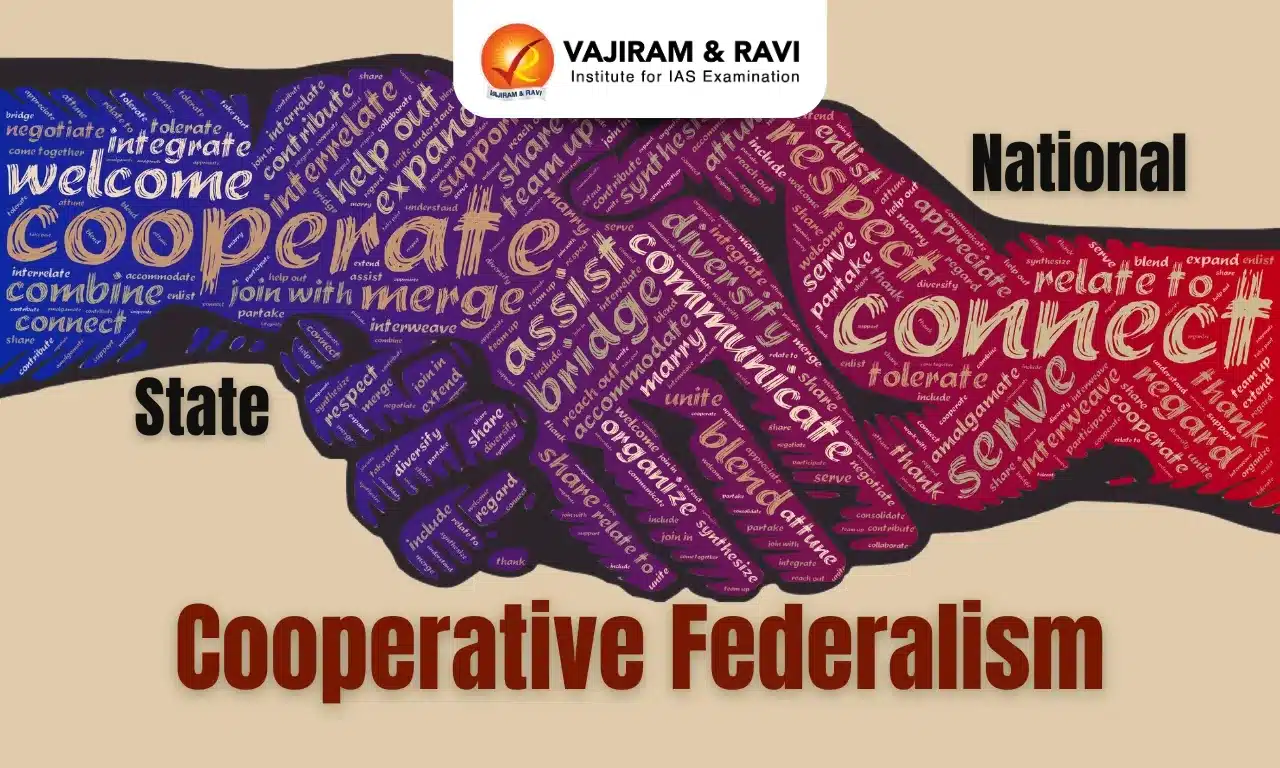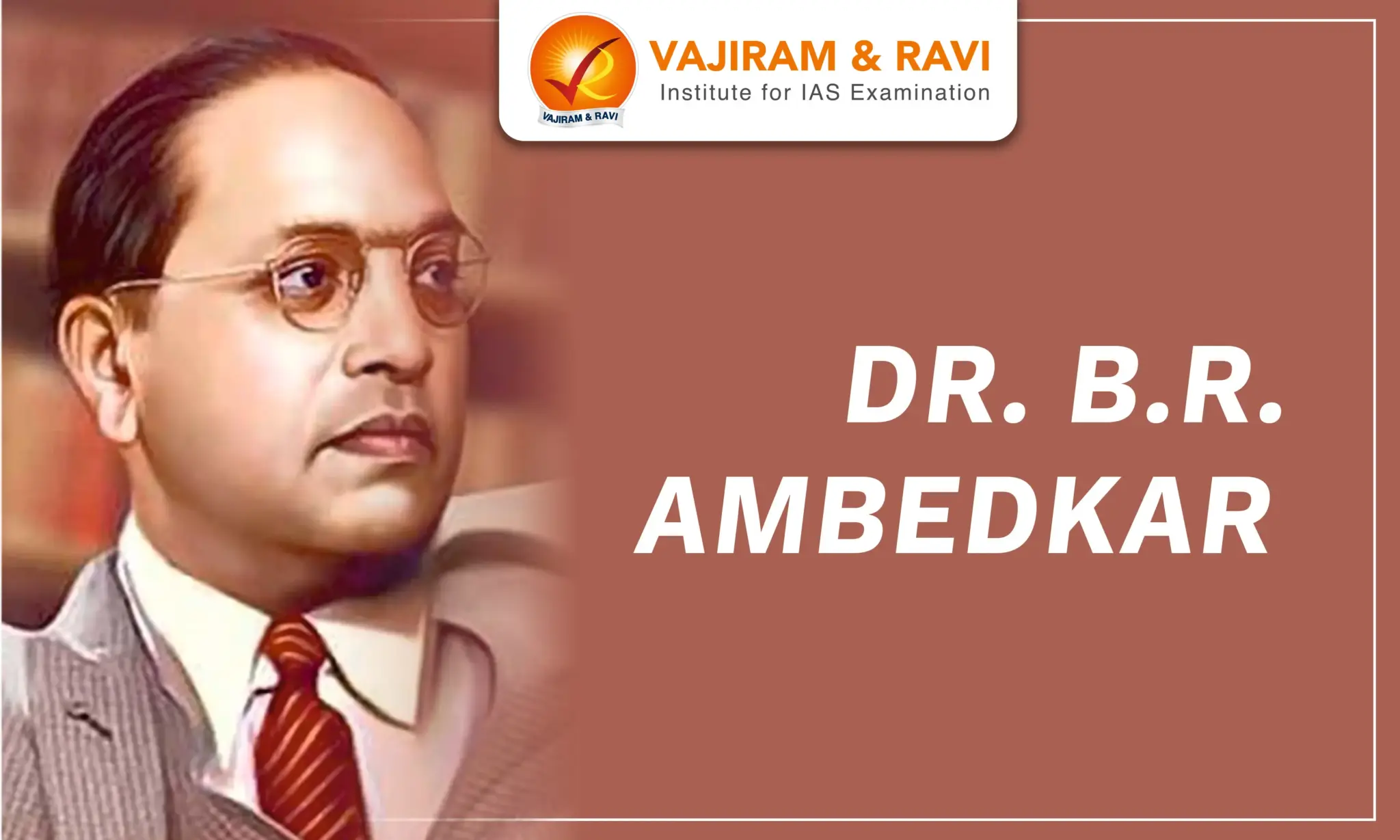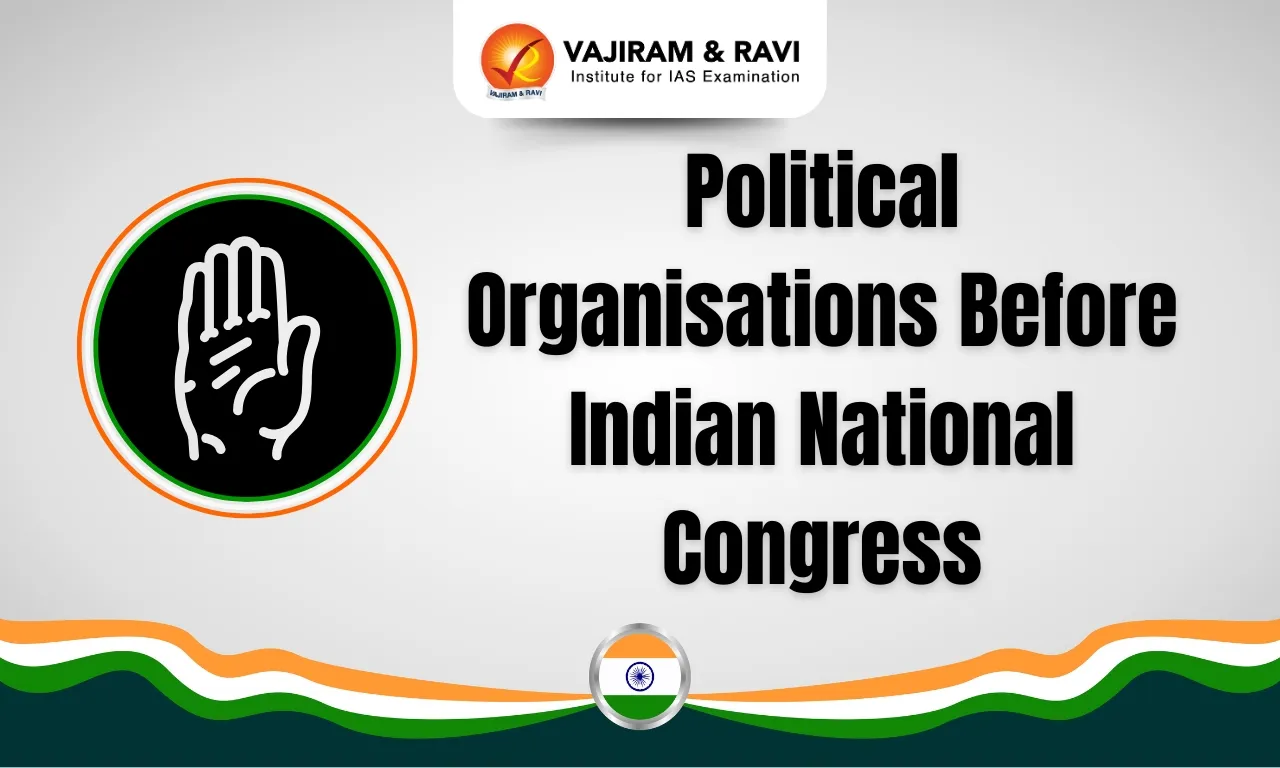What is cooperative federalism?
Cooperative federalism is a concept of federalism in which national, state, and local governments increasingly interact cooperatively and collectively to solve common problems.
- The Indian model of federalism is predominantly ‘cooperative’ as laid down by the Supreme Court in State of Rajasthan v. Union of India,1977.
- The most essential precondition for the effective functioning of cooperative federalism is robust institutions and mechanisms for promoting intergovernmental relations.
- The Constitution of India does not explicitly contain the phrase ‘cooperative federalism,’ but the functioning of the Constitution implicitly resulted in ‘cooperative federalism.’
- While India does not entirely mimic a pure federal system, it follows a quasi-federal system of governance. And for a smooth functioning federation, there needs to be cooperation and collaboration between the federal units.
- Sarkaria Commission Report (1988) on Centre-state relations stated that by the middle of the twentieth century, federalism had come to be understood as a dynamic process of cooperation and shared action between two or more levels of government.
What is the need for cooperative federalism in India?
India takes pride in describing itself as the world's largest democracy, and this democracy is significantly meaningful because it is encapsulated in a federal structure.
- Promoting social justice: While democracy represents the majority opinion, federalism accommodates and links it to the voice of the minority, lending a flavor of social justice.
- Ensuring accommodation: Cooperative Federalism, along with cultural and ethnic pluralism, has given the country's political system great flexibility and, therefore, the capacity to withstand stress through accommodation.
- Ensuring stability and growth: In the turbulent circumstances prevailing at that time and in the wake of India's partition, only a cooperative federal setup could ensure the needs of security, defense, urge for a welfare state, and meeting the situation of economic crisis.
- Contemporary issues: Also, the current trends ( like Covid-19) emphasize cooperation and coordination rather than the demarcation of powers between different levels of government.
What are the constitutional provisions which uphold the spirit of cooperative federalism?
| Article | Provision |
| Article 54 | Representation of states in the President’s election where the members of legislative assemblies are part of the Electoral college. |
| Article 80 | Provides for the Council of States, representing states in the union legislative process. |
| Article 246, read with Schedule VII |
It demarcates the subject matters upon which the Centre and states may enact laws. For the matters listed in the Concurrent List, the Centre and the state may legislate. |
| Article 262 | It allows the Parliament to adjudicate inter-state water disputes. Further, In T.N. Cauvery Sangam v. Union of India(1990), the Supreme Court clarified that the Parliament could appoint a Tribunal for such adjudication. |
| Article 263 | It provides for the establishment of Inter-State Councils, which are empowered to investigate those matters that interest both the Centre and states. |
What are the recent measures to promote cooperative federalism in India?
In recent years, several measures have been taken by the Indian government to promote cooperative federalism. Here are some examples:
NITI Aayog:
- NITI Aayog has been constituted to actualize the important goal of cooperative federalism and to enable good governance in India.
- Niti Aayog’s Governing Council comprises Chief Ministers of states and Administrators or Lieutenant Governors of Union Territories.
- NITI Aayog acts as the quintessential platform for the Government of India by bringing States together as ‘Team India’ to work towards the national development agenda.
- It also established models and programmes for the development of infrastructure and to reignite and establish private-public partnership, such as the Centre-state partnership model Development Support Services to States and Union Territories (DSSS) and the Sustainable Action for Transforming Human Capital (SATH) programme.
- Other initiatives include Policy support and capacity development of State/UT functionaries and Launching of the Aspirational Districts Programme for development of backward districts.
Goods and Services Tax (GST):
- The introduction of the GST in 2017 is considered one of the most significant steps towards promoting cooperative federalism in India.
- It is a unified tax system that replaced various state-level taxes, creating a common market across the country.
- The GST Council, consisting of representatives from the central and state governments, is responsible for making decisions related to the tax system.
- This has ensured a high degree of collaboration and cooperation between the central and state governments.
Centrally Sponsored Schemes:
- Centrally Sponsored Schemes (CSS) are initiatives implemented by the central government in partnership with the state governments.
- Under CSS, the central government provides a significant portion of the funding for the scheme, while the state government is required to contribute the rest.
- The central government also provides guidelines and standards for the implementation of the scheme, while the state government has the flexibility to adapt the scheme to local needs and priorities.
- According to a report by the Ministry of Finance, there are currently 28 CSS in operation, covering a wide range of areas, including rural development, education, health, and skill development.
What are the factors that hinder cooperative federalism?
- Over-centralization: The Centre enjoys more power than the states, and the most important subjects of the country are listed in the Union List. This often results in conflicts of interest between the Centre and states, as the Centre imposes rules and regulations that many states find discriminatory. For example:
- Article 356 related to the imposition of the President’s Rule in a state which is frequently prone to misuse by the Centre.
- Limitations of Inter-state Council: While Article 263 allows the Inter-State Council to make recommendations, It does not empower it to enforce or implement them.
- Regionalism: A strong feeling of regionalism makes it difficult for the Government to ensure cooperation because regionalism gives rise to secessionist forces, which threaten the very existence and identity of the country.
- Uniform approach: The Centre, while framing policies, fails to take into account the heterogeneity of India. The one size fits all approach doesn’t work in a diverse country like India. This makes cooperation between the centre and the state very difficult.
- Fiscal federalism: One of the major challenges is the unequal distribution of financial resources between the Centre and states. The lack of adequate financial resources can hamper the ability of states to deliver essential services and implement development programs.
- Administrative challenges: This includes issues such as inadequate staffing and training, lack of communication and coordination, and bureaucratic red tape.
What steps could help promote cooperative federalism in India?
Sarkaria and Punchhi Commission
The Sarkaria Commission(1987) and Punchhi Commission(2010) gave several recommendations to cultivate cooperative federalism and suggested actionable steps. Some of them include
- The office of the Governor should be apolitical, and the terms of his removal should be altered.
- Restricting the use of the President’s rule under Article 356 to prevent excessive misuse by the Centre.
- Extending the mandate of the Inter-State Council beyond advice and recommendations.
- Laying down guidelines to prevent misuse of the President’s veto of the legislation.
- Including states when the Centre enters into any international agreements.
General recommendations
- Strengthening Inter-Governmental mechanisms: Utilizing the constitutional and statutory institutions set up adequately to resolve the conflicts between the union and the state government and further the welfare of the people.
- Promoting fiscal federalism: Promoting fiscal federalism can help in promoting greater fiscal autonomy for state governments, which can in turn help in promoting greater coordination and cooperation between the central government and state governments.
- Strengthening institutional frameworks: This can be achieved by enhancing the role of institutions such as the NITI Aayog, the Inter-State Council, and the Finance Commission.
- Regular Inter-Governmental meetings: Regular meetings between the central government and the state governments can help in sharing information, discussing issues of mutual concern, and arriving at a consensus on policy matters.
- Avoiding the ‘One size fits all’ approach: This is crucial for promoting cooperative federalism because it recognizes the diversity of the States in terms of their socio-economic, political, and cultural contexts.
- Empowering local governments: Empowering local governments can help promote cooperative federalism by giving them greater decision-making powers and financial resources.
How has cooperative federalism helped deal with the COVID-19-induced pandemic in India?
Intergovernmental cooperation is key to effectively responding to any crisis or disaster like the recent Covid-19 pandemic.
- Health is a subject in the State List, and infectious disease control is a subject in the Concurrent list, and combating the Covid-19 pandemic necessitated a joint effort of the Union and the state governments.
- The Epidemic Diseases Act 1897 and Disaster Management Act 2005 allowed joint efforts between the central and state governments to control the spread of infectious diseases.
- The National Disaster Management Authority and State Disaster Management Authorities worked together to achieve the objectives of the DM Act.
- The virtual conferences between the Prime Minister and the Chief ministers showed a spirit of cooperation at all levels of government.
- The collaborative efforts towards Covid-19 vaccination have been praised by the UN and WHO. Overall, the pandemic has renewed cooperative federalism in India and promises collaborative governance in the future.
Last updated on November, 2025
→ Check out the latest UPSC Syllabus 2026 here.
→ Join Vajiram & Ravi’s Interview Guidance Programme for expert help to crack your final UPSC stage.
→ UPSC Mains Result 2025 is now out.
→ UPSC Notification 2026 is scheduled to be released on January 14, 2026.
→ UPSC Calendar 2026 is released on 15th May, 2025.
→ The UPSC Vacancy 2025 were released 1129, out of which 979 were for UPSC CSE and remaining 150 are for UPSC IFoS.
→ UPSC Prelims 2026 will be conducted on 24th May, 2026 & UPSC Mains 2026 will be conducted on 21st August 2026.
→ The UPSC Selection Process is of 3 stages-Prelims, Mains and Interview.
→ UPSC Result 2024 is released with latest UPSC Marksheet 2024. Check Now!
→ UPSC Prelims Result 2025 is out now for the CSE held on 25 May 2025.
→ UPSC Toppers List 2024 is released now. Shakti Dubey is UPSC AIR 1 2024 Topper.
→ UPSC Prelims Question Paper 2025 and Unofficial Prelims Answer Key 2025 are available now.
→ UPSC Mains Question Paper 2025 is out for Essay, GS 1, 2, 3 & GS 4.
→ UPSC Mains Indian Language Question Paper 2025 is now out.
→ UPSC Mains Optional Question Paper 2025 is now out.
→ Also check Best IAS Coaching in Delhi
Cooperative Federalism FAQs
Q1. What is the National Development Council? +
Q2. Is NITI Aayog a constitutional body?+
Tags: cooperative federalism quest

















